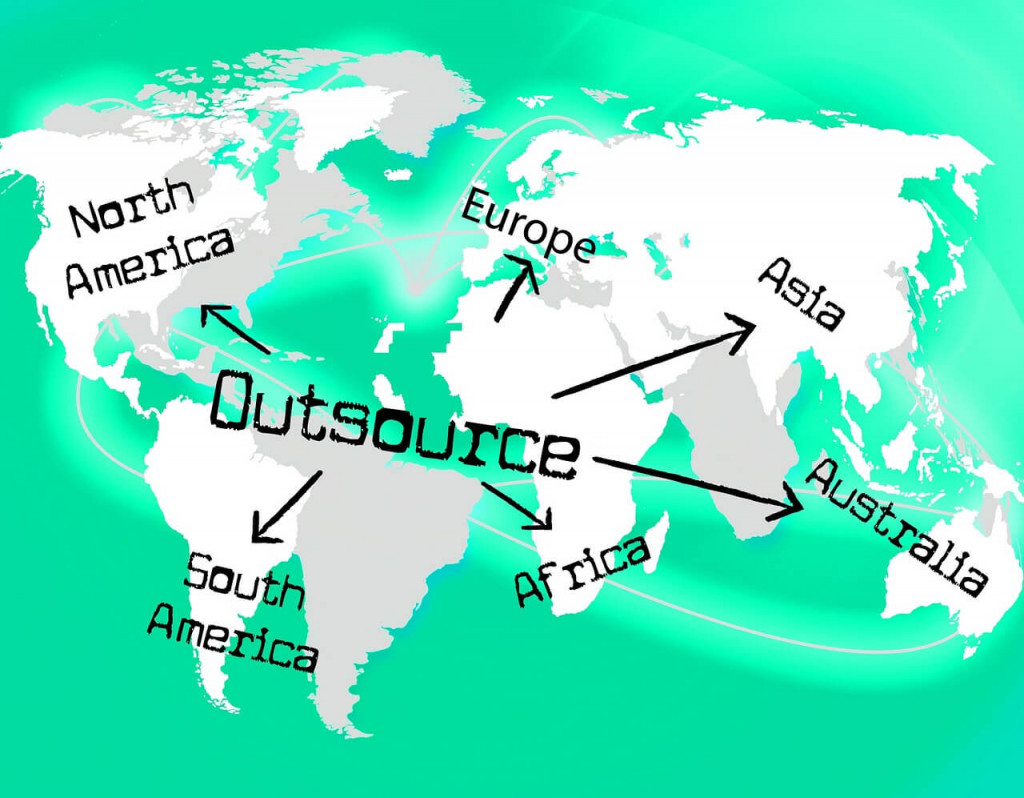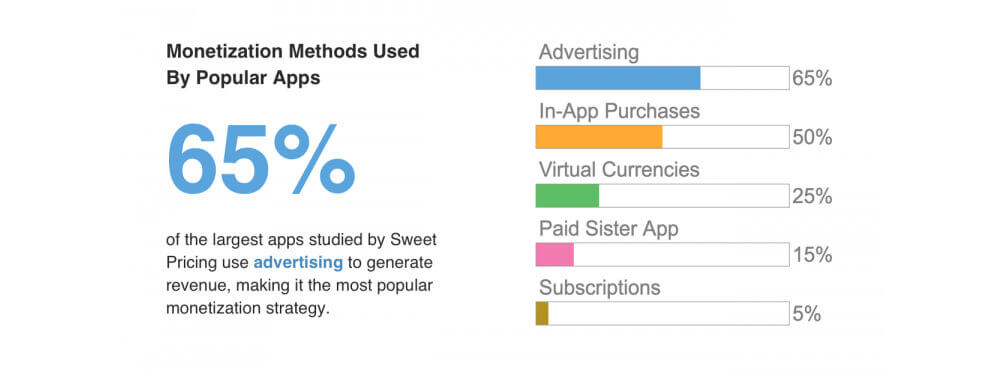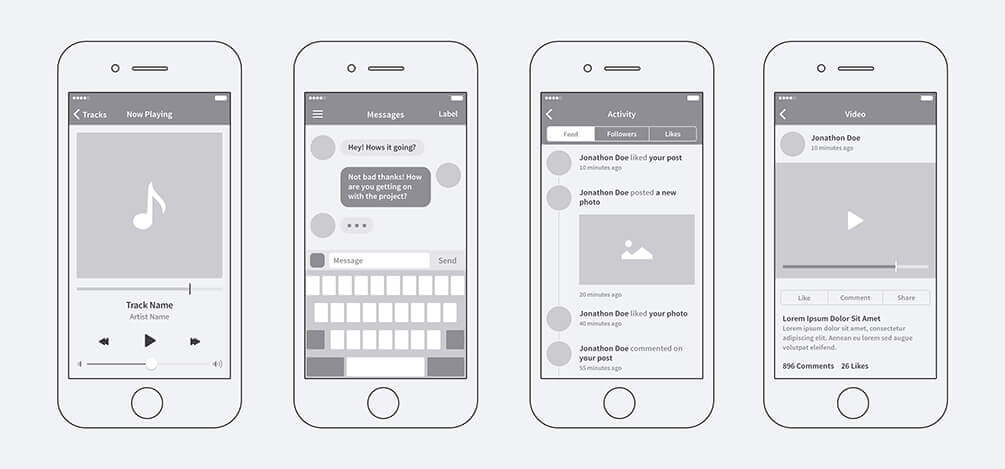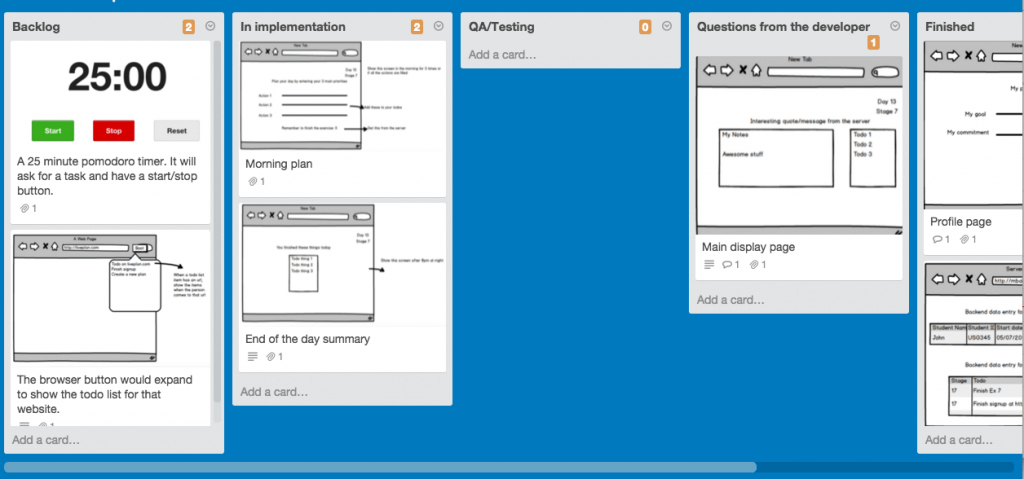Outsourcing app development and in-house app development have their advocates, ready to tell you all pros and cons. And that is great news, as one has plenty to learn from before deciding to pay someone to build an app. Why outsource, how to outsource development, and how much does it cost to make an app on outsource – is our subject of scrutiny this time.
Everything implies preparation. Before sending an agency or a developer the “I want to develop an app” offer, your personal checklist should be something like:
- Is my app/product idea clearly outlined?
- Are all mobile app features and functions defined?
- Is it going to be a MVP or a full feature app?
- What platforms it will be based on? (iPhone and/or Android app development)
- Do I have clear UX/UI design, QA, marketing etc. requirements ready?
- What is my end-game with an app?
- Do I know my criteria for choosing candidates for app development?
- What is my budget and what is an average outsource app development cost?
You know the benefits of mobile app outsourcing: cheaper cost, no long-term commitments, a wide range of options. On the other hand, there are many risks, starting from language to logistical challenges. Let’s walk through all of them.
How much does it cost to outsource app development
Depending on location, the cost to build a mobile app may range from $25.000 to $100.000. If you take complexity and scope into account primarily, think of $20.000 to $50.000 range for a simple app, while a complex app with multiple features would cost from $100.000 to $200.000 to outsource approximately.
Let's Build Your App
Provide us with your contact details and we will contact you today
Thank you for feedback.
Consider the following common types of apps and an average cost of app development:
- Real Estate Applications – $12,000 – $15,000
- Messaging app like Whatsapp – $50.000 to $130.000
- Dating app like Tinder – $80.000 to $200.000
- City guide app – $25.000 to $50.000
- Networking (social) app – $25.000+
- Banking/payment app – $40.000 to $70.000
- Taxi booking app like Uber – $25.000 to $100.000

So how much app outsourcing cost actually? Below we’ve collected the average hourly rates of iPhone and Android developers by location/region. Please keep in mind, these are general figures and you will get the exact rates only directly from your developer.
iPhone/Android app development cost, hourly rates
| Region | Platform | Hourly rate, avg. | Platform | Hourly rate, avg. |
| North America | iOS | $150 | Android | $170 |
| Australia | iOS | $110 | Android | $110 |
| United Kingdom, EU | iOS | $70 | Android | $70 |
| South America | iOS | $50 | Android | $40 |
| Eastern Europe | iOS | $35 | Android | $35 |
| India, Asia | iOS | $20 | Android | $25 |
From our previous post, you already know how to find and hire an app developer. Now, what is key to productive app outsourcing? Once you have the accurate project description with all features and design requirements, it’s time to contact app programmers. Is your shortlist ready?
First, look up their website/portfolio, check references, testimonials, and case studies. Then conduct interviews in person or via Skype. How do they communicate? A good developer would be keen to explain everything, and any troubles in your talks are potential red flags. Are they experts at what they do? Check their recent projects, pay attention to design and all tiniest details, and ask how they fix bugs. Do they deliver on time? You should be able to see proven records of making apps on time.
Stages and supervision
Generally, application development outsourcing is the process consisting of:
- Discovery – communicating about goals, deadlines and terms;
- Scoping/evaluation – full range of apps’ features and capabilities, mock-ups. etc.;
- Development – actual creation (coding) of an app;
- Control and production – ongoing cycle, as there’s always something to update or remake.
Also, before starting app development outsourcing, you should grasp: a) the downsides of outsource, b) technical details, c) fixed bid or hourly bid, d) an agency or an independent developer, e) need for NDA, f) establishing regular checks, g) list of vital features and nice-to-have ones.
The main risk of outsource app development cost is its quality. So, control and supervision are absolutely mandatory. You should examine the code regularly and ensure it meets your app project goals. Examine a demonstration of features, try it out for yourself, ask to elaborate if there’s a need. Voice your concerns, it’s your money to lose.
Now, let’s go through each stage and elaborate.
#1 Identify the purpose
It means the precise definition of what the app would do and what you would do with it. Free app for entertaining purposes and, let’s say, fitness app with paid subscription are two universes. Any topic of how to outsource app development starts with this and helps to hire offshore developer(s) with relevant skills.

Popular app monetization methods. Credit: Sweet Pricing.
#2 Outsource app development risk assessment
There’s a legion of risks, among which could be poor product quality, delays, miscommunication, unreliability, source code insecurity. Limit database access, divide the code, weigh in all possible legal issues, etc.
#3 Do the homework
Clearly, telling a dev team to build you an app and waiting is not enough. You have to direct and supervise. For that you need to prepare project description, list of features and screens, user flow and UX basics, wireframes, tech stack, etc.

iPhone wireframing kit. Credit: Tony Thomas.
#4 Interview and select a developer
Talk to a person and see if you can understand each other easily. Ask some specific things, like experience in outsource Android development to see if he/she is confident about skills. Check or ask for portfolio. Call unexpectedly to see how a person reacts. Also, consider time zones you’ll be working with.
#5 Project plan
You should establish milestones and checkups and agree on those mutually. These are your short-term goals, or stages. A common practice is to pay after each stage is completed. Use of project management tools (Asana, Trello, Basecamp…) is a benefit as well. If you can assign a project manager to control your offshore app development, it would be an ace up your sleeve.

Using Trello management tool for app outsourcing
#6 Oversee
But do not micro-manage too much. Oversight of app development doesn’t mean everyday calls and feedback. You have the milestones put in place, so you’d better not distract an outsource developer(s) by chatting too much. The general rule here is not to interrupt the process.
#7 Adequate tests
Ensuring the app works is not enough. You have to ensure it works well. The more types of testing and user behavior scenarios you check, the better outcome you’ll have. Go through every possible user action, your developer should do the same and even more.
#8 App release
Experienced app developers have published dozens of applications to Google Play and/or App Store, so they should be able to help.
How to outsource app development – Best practices
You’ve seen this question in many forms on Quora or Reddit, as well as articles naming 5 to 10 best practices. There’s no need to invent a bicycle with outsource app development. So we’ll name general rules of thumb and then the best ways of avoiding mistakes.
Beware of trends but stay unique. Flat design, skeuomorphism and everything intuitive is alright, but shouldn’t you distinguish your app? Be inspired but stand out. Bring added value, bring something new to the community.
Security in mind. With hackers active as never before, it is equal to Russian roulette not to invest in mobile app security measures. Customer information should be protected even more thoroughly than your own app, at times. This suggests authentication mechanisms, and other options.
Know your users. You can start by bringing them in at early stages, share your app idea. Collect feedback and start app outsourcing having this in mind.
Agreement and software documentation. This is what you preferably have to get out of the person/team building your app. If you get only the app itself, later on you or your employees will not have that minimum reference of how to run and maintain the app.
Legal representation. As not every agreement goes well, it’s better to cover your bases. Inadequate end product, ownership rights, data loss…there are plenty of risks. It should be possible and more or less transparent to reach authorities of other country. Getting advice from a law firm in the country of your outsource app development is even better.
Keep leverage till the end. Reserving a certain part of total payment until accepting the outcome is a highly positive practice, leaving you with power to force a developer to fix possible post-release issues. The cost of your project can rise up drastically if anything goes wrong.
How NOT to outsource development
And here’s how one should not outsource mobile app development. These are the five most spread mistakes people fall for, especially hiring offshore developers for the first time.
Mistake #1: Outsourcing to those behind trends. Freelancers, coders, app developers aren’t designers and marketers at the same time. But they have to be familiar with best practices, app culture and trends in your region. And especially UX/UI tendencies among your target customers.
Mistake #2: Not considering time zone differences. If your overseas dev team is not online during your business hours, you’ll end up with constant delays. You’ll get your issues/bugs fixed the next day or later. The same goes for project deadlines. Add to that a project manager with bad communication skills, and you’re heading for disaster.
Mistake #3: No PM, no questions asked. Not having someone to direct all the process, to enforce deadlines and to supervise could also end in tears. If you don’t have a PM, use at least online management tools. Another bad sign is when your developer does not ask many questions regarding the project, and performs the job robotically.
Mistake #4: No functional tests. How do you make sure your app works as it should, then? If you and your developer(s) do not recreate user scenarios, how would you find and resolve errors? How would developers test out critical app features, e.g. GPS, from abroad?
Mistake #5: Good deal price rather than quality. You may fall for $15 per hour rate, but you’ll get exactly the same in return. If you’re a risk taker and adventure seeker, that’s fine. If your app is a serious business project, seek a proper balance of price and quality.
What about NDA?
Making a developer sign a non-disclosure agreement (NDA) or not while outsourcing app development, is up to you. Of course, it is better and safer to sign it before starting the whole process, as it would protect your intellectual property rights. It would also prevent the development company or person from reusing your works, design, etc. By the way, you should check if the agreement is binding in the country where a developer (or firm) is located. On the other hand, not signing an NDA allows a developer to present his works publicly. That is beneficial to everyone.
Best app outsourcing companies
So you want to pay someone to create an app for you. Another noteworthy issue is to distinguish good guys from bad guys on the initial stages. Some of good markers and positive responses from app developers are as follows.
- A proper and practical bidding response.
Something like: “We are already (have been recently) developing a product with similar features. This would help us do the job efficiently and more quickly”.
- Written and verbal communication.
It should be fine and in line with your business culture. Timely and grammatically correct replies mean a lot, though you don’t have to be a grammar-nazi. Discussing the scope of the app project via Skype, asking questions and clearing things up. The points mentioned above are crucial in outsourcing app development.
- Responsiveness.
A responsive candidate, an eager to communicate candidate, a more responsive that others candidate is a good choice. If he/she can reply to your requests quickly, or despite the time difference, that is great.
- Integrity.
High skills and competence is one thing, integrity and basic code of honor is another. These are, of course, human qualities we are talking about. For example, if your candidate refuses to give out details of his similar project under NDA, you should understand he’s doing the right thing.
Basic takeaways
- Start with a small project
- Negotiate
- Conduct interviews properly
- Provide detailed specifications
- Work in milestones
- Perform regular checks
- Have legal issues covered
- Conduct testing
- Do not chase the cheapest option
Let's Build Your App
Provide us with your contact details and we will contact you today

